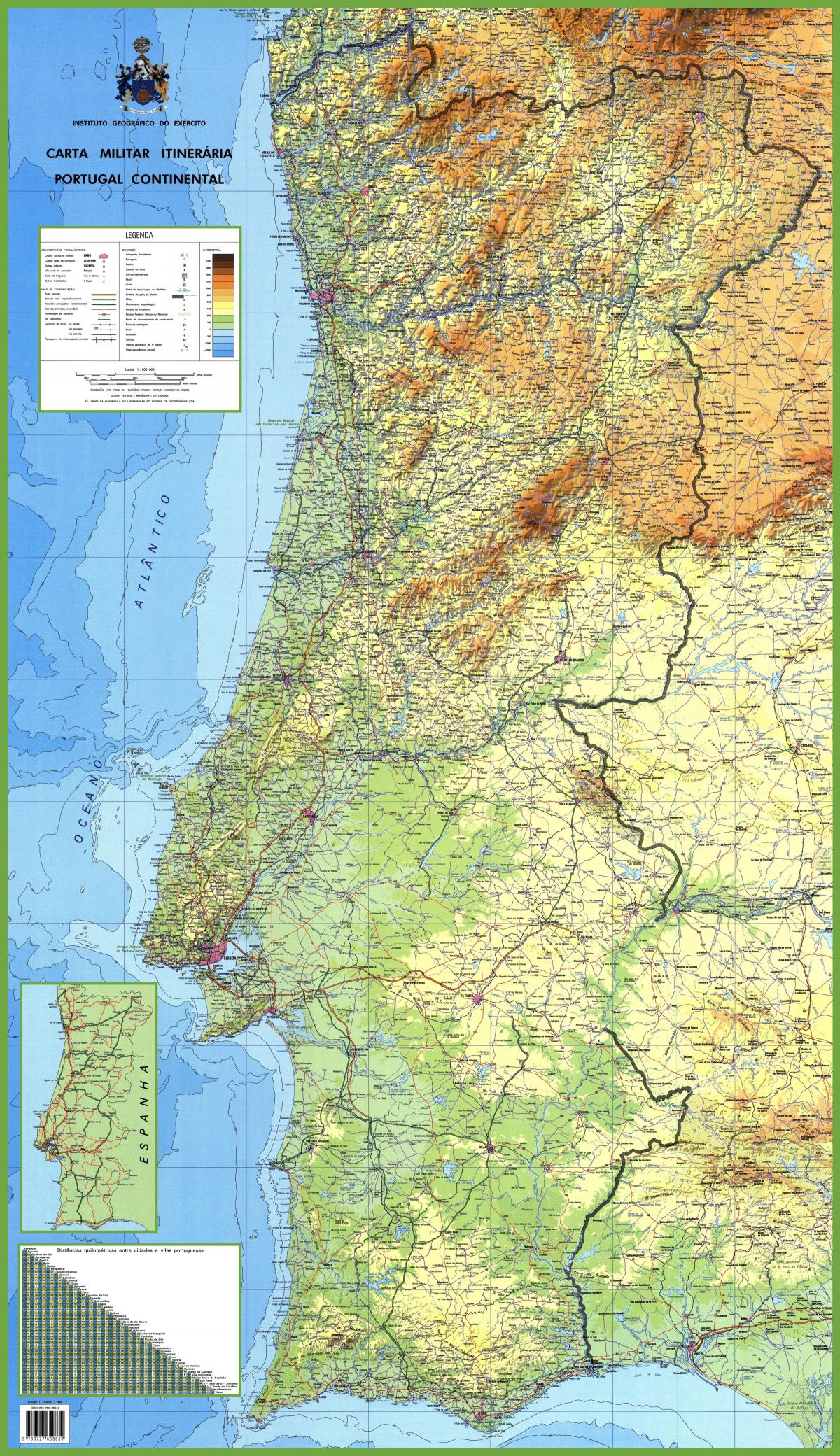search
Portugal map
Detailed map of Portugal. Portugal map (Southern Europe - Europe) to print. Portugal map (Southern Europe - Europe) to download. In 1139, Portugal appointed King Afonso Henriques as its king. Lisbon is said to be four centuries older than Rome. Due to its excellent trading location, the Phoenicians settled in Lisbon around 1200 BC. The Portuguese were the first Europeans to reach Japan in the 16th century as its mentioned in Portugal map. They left their linguistic mark on this Asian nation. Words such as pan (from the Portuguese pão meaning bread) and sabato (from the Portuguese sabado meaning Saturday) are all good examples. Portugal holds the record for the shortest and longest-reigning monarchs. Henrique of Portugal was the king of Portugal for more than 73 years. Luis Filipe, on the other hand, was king for only 20 minutes.
The 18 districts of mainland Portugal as you can see in Portugal map are: Aveiro, Beja, Braga, Bragança, Castelo Branco, Coimbra, Évora, Faro, Guarda, Leiria, Lisbon, Portalegre, Porto, Santarém, Setúbal, Viana do Castelo, Vila Real and Viseu – each district takes the name of the district capital. Within the European Union NUTS (Nomenclature of Territorial Units for Statistics) system, Portugal is divided into seven regions: the Azores, Alentejo, Algarve, Centro, Lisboa, Madeira and Norte, and with the exception of the Azores and Madeira, these NUTS areas are subdivided into 28 subregions. Continental Portugal is agglomerated into 18 districts, while the archipelagos of the Azores and Madeira are governed as autonomous regions; the largest units, established since 1976, are either mainland Portugal (Portuguese: Portugal Continental) and the autonomous regions of Portugal (Azores and Madeira).
Administratively, Portugal is divided into 308 municipalities (Portuguese: municípios or concelhos), which are subdivided into 4260 civil parishes (Portuguese: freguesia) as its shown in Portugal map. Operationally, the municipality and civil parish, along with the national government, are the only legally identifiable local administrative units identified by the government of Portugal (for example, cities, towns or villages have no standing in law, although may be used as catchment for the defining services). For statistical purposes the Portuguese government also identifies NUTS, inter-municipal communities and informally, the district system, used until European integration (and being phased-out by the national government).
Portugal has been a democratic republic since the ratification of the Constitution of 1976, with Lisbon, the nation largest city, as its capital. The constitution grants the division, or separation, of powers among legislative, executive, and judicial branches as its mentioned in Portugal map. The four main institutions as described in this constitution are the President of the Republic, the Parliament, known as the Assembleia da República (English: Assembly of the Republic), the Government, headed by a Prime Minister, and the courts. The President, who is elected to a five-year term, has a supervisory non-executive role: the current President is Aníbal Cavaco Silva. The Parliament is a chamber composed of 230 deputies elected for a four-year term. The government, whose head is the Prime Minister (currently Pedro Passos Coelho), chooses a Council of Ministers, that comprises the Ministers and State Secretaries.
Protected areas of Portugal include one national park (Portuguese: Parque Nacional), 12 natural parks (Portuguese: Parque Natural), nine natural reserves (Portuguese: Reserva Natural), five natural monuments (Portuguese: Monumento Natural), and seven protected landscapes (Portuguese: Paisagem Protegida), which include the Parque Nacional da Peneda-Gerês, the Parque Natural da Serra da Estrela and the Paul de Arzila as its shown in Portugal map. These natural environments are shaped by diverse flora, and include widespread species of pine (especially the Pinus pinaster and Pinus pinea species), the chestnut (Castanea sativa), the cork-oak (Quercus suber), the holm oak (Quercus ilex), the Portuguese oak (Quercus faginea), and eucalyptus (Eucalyptus globulus). All are prized for their economic value. Laurisilva is a unique type of subtropical rainforest found in few areas of Europe and the world: in the Azores, and in particular on the island of Madeira, there are large forests of endemic Laurisilva forests (the latter protected as a natural heritage preserve).


